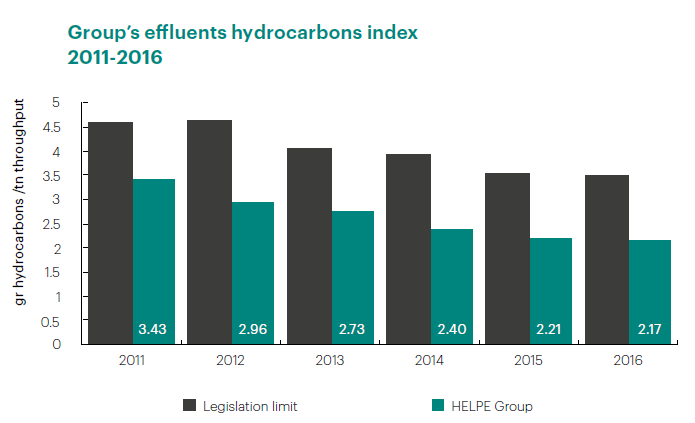HELLENIC PETROLEUM’s aim is to reduce both air emissions and waste through specific actions such as maximizing the use of gaseous and high environmental standards fuels and implementing advanced technologies in the production process.
Despite increased operation compared to 2015, in 2016, the indicators of the most important gas emissions from the sector (in kg per tonne throughput) shows a slight (Nitrogen Oxides-NOX) to significant decrease (emissions of sulphur dioxide-SO2 and PM10). Only Volatile Organic Compounds (VOC) increased in comparison to 2015, because in 2015, the refinery of Aspropirgos underwent a prolonged shut-down period. In comparison to the same indicators from 2014, there was no increase in VOC despite the increased operating levels
The above is presented in detail in the diagram below, which shows the gradual reduction of air emissions over the last three years.
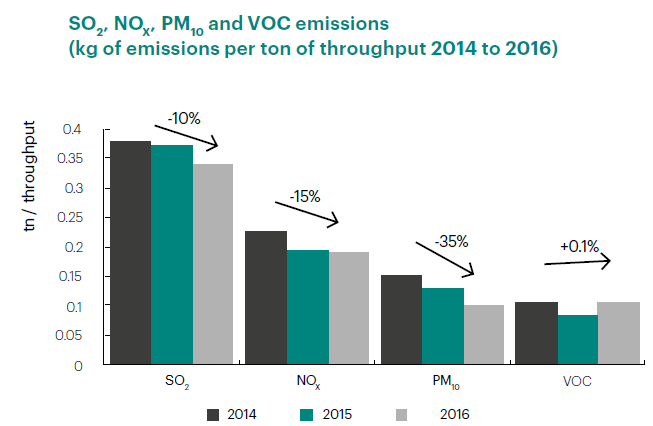
Regarding compliance with legislation, indicatively, SO2 emissions remained much lower (-54%) than the current environmental limit imposed (in tn/year). Note that the above mentioned limit decreased in 2013 by 30% compared to the limit in force until 2012.
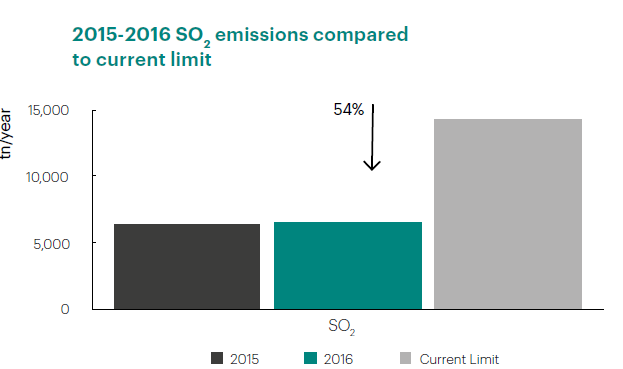
Regarding wastewater and solid waste management, primary objectives include the reduction of their output and the maximization of recycling. Where this is not feasible, the best waste management for the environment and human health is in situ treatment.
HELLENIC PETROLEUM has invested in modern waste treatment facilities, such as the 3-stage wastewater treatment units and the oily sludge treatment unit, using the biodegradation technique, in the Thessaloniki industrial complex. In 2015, the latter managed to triple its efficiency and improve the quality characteristics of the final product for disposal by adding specific bio-enhancing microorganisms in the process.
HELLENIC PETROLEUM’s integrated waste management expresses its Sustainable Development strategy and contributes to the circular economy.
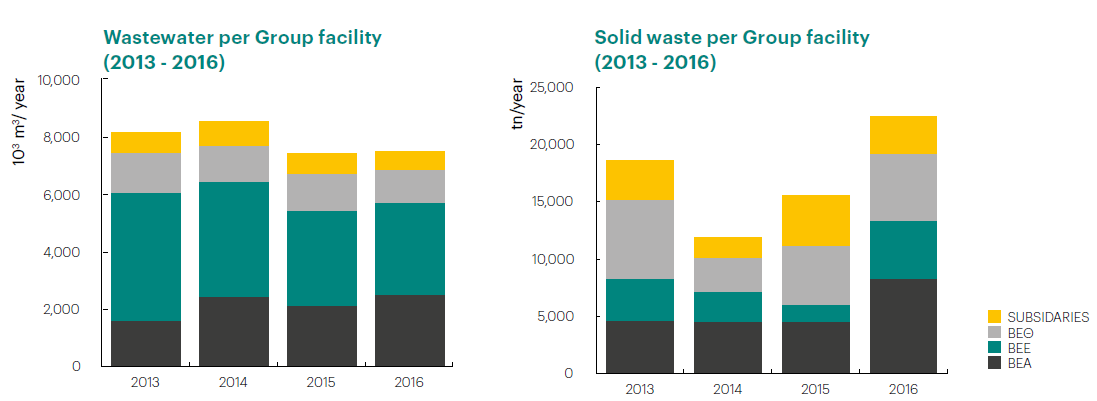
The diagrams above present the comparison of the amounts of wastewater and solid waste, respectively: Liquid waste remained at the low levels of the previous year, as a result of their efficient management. On the other hand, solid waste, mainly related to the efficiency and availability of solid waste treatment plants (either inside or outside the plant), vary from year to year depending on tank maintenance planning and the availability of the solid waste treatment plants. For 2016, solid waste showed an increase compared to the previous year, mainly due to the increased quantities produced for final treatment at the Aspropyrgos and Elefsina refinery, as well as Elefsina’s refinery short-term shut-down.
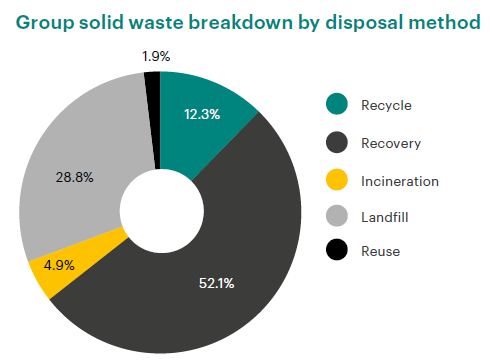
The pie chart above shows the methods of disposal of solid waste; with over 65% of total waste being recycled, recovered through raw materials recovery processes and reused.
Moreover, improved performance in terms of the quality of treated effluents continues. In 2016, the hydrocarbon index for the Group’s three refineries was 38% lower than the statutory limit. The H/C index decrease (-37%) over the last 6 years is presented below.
